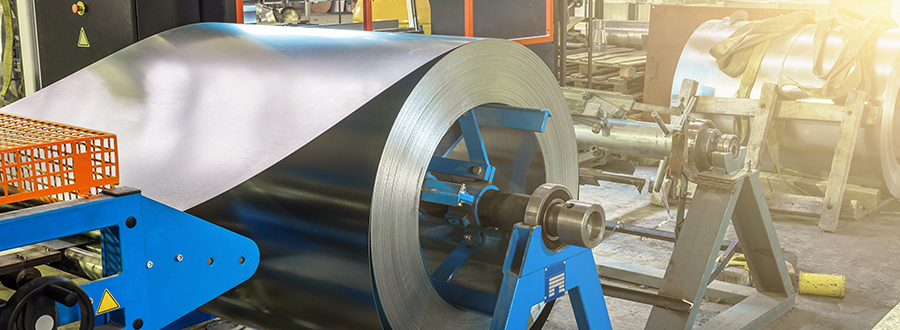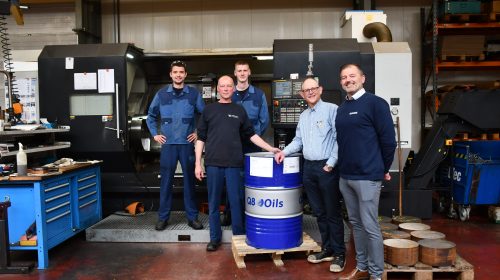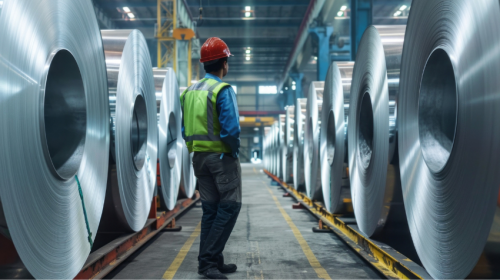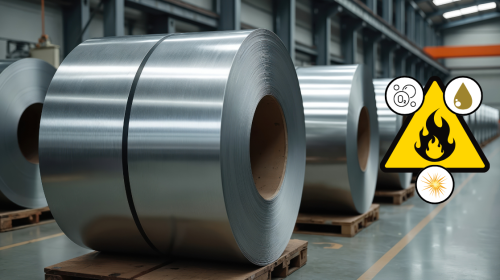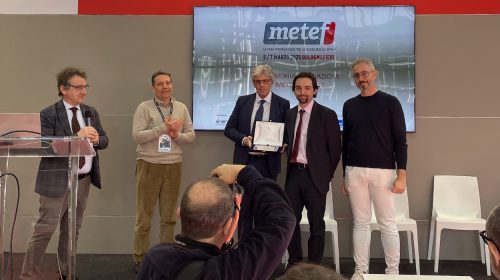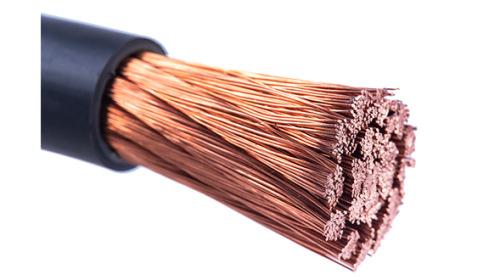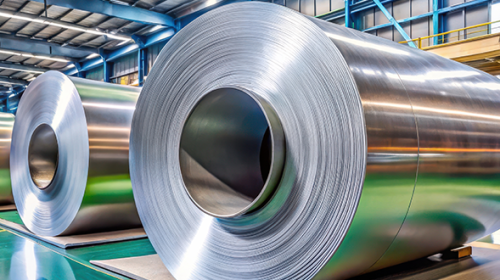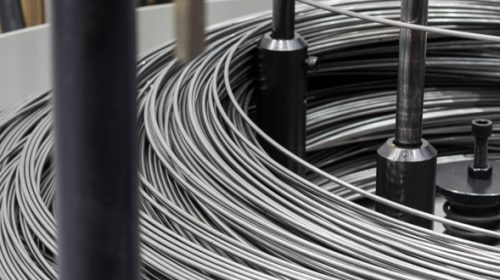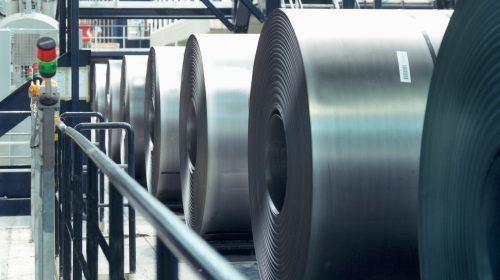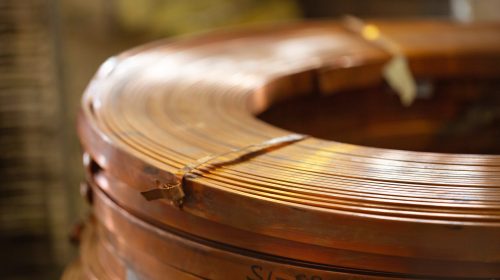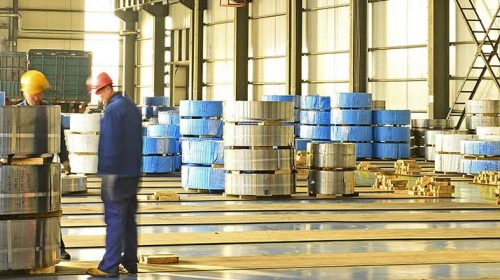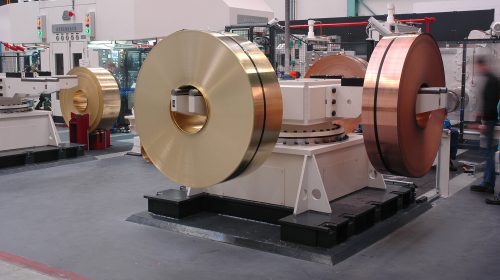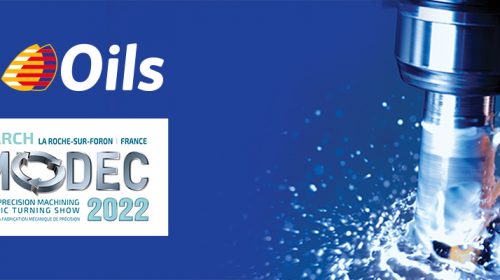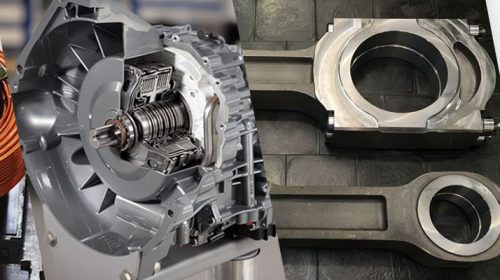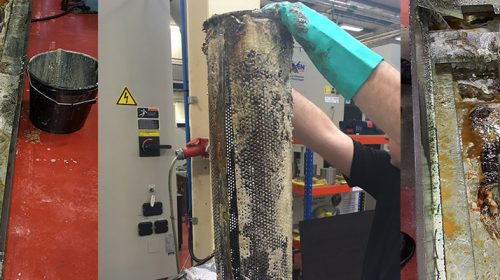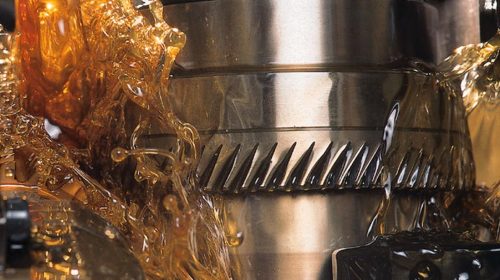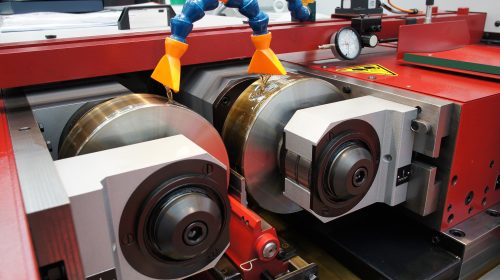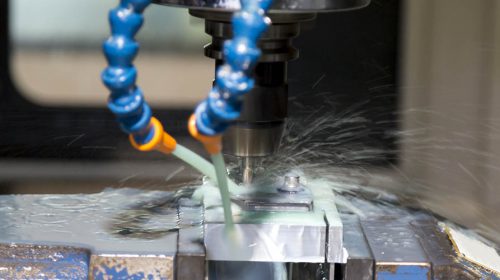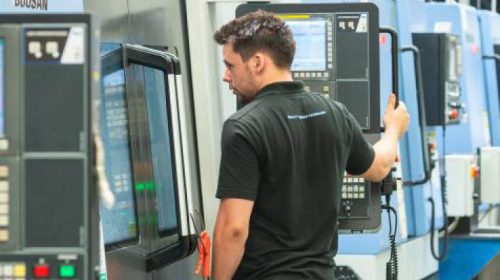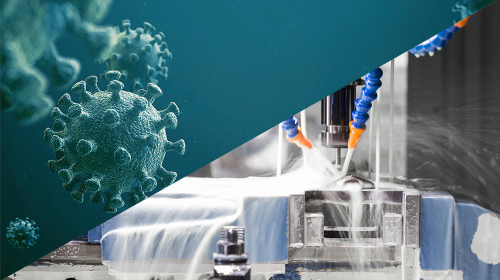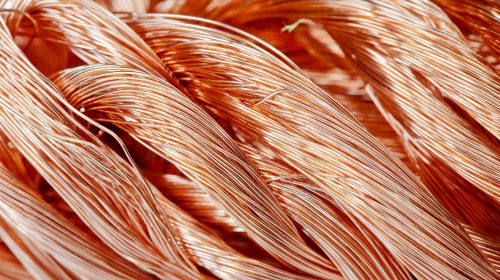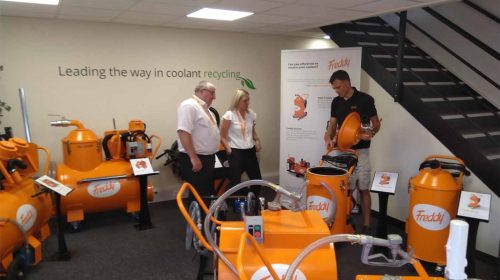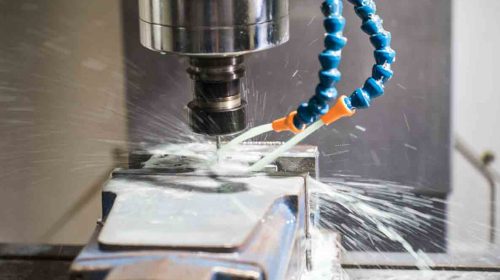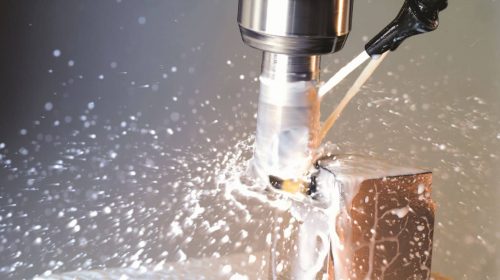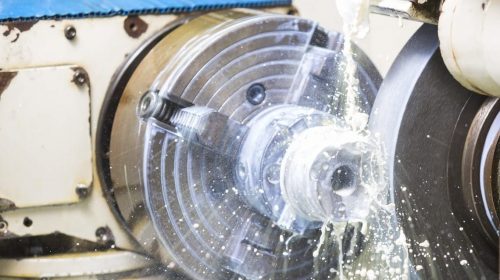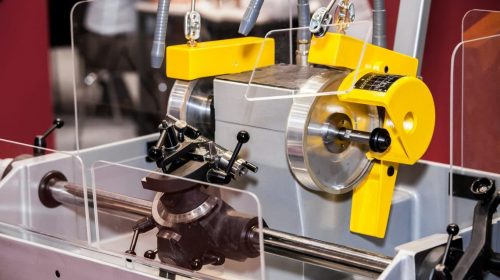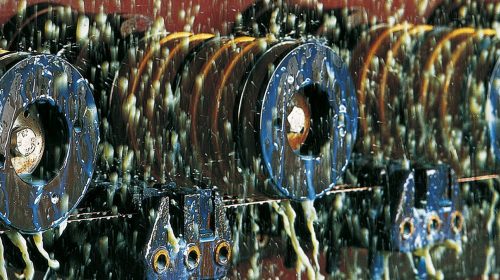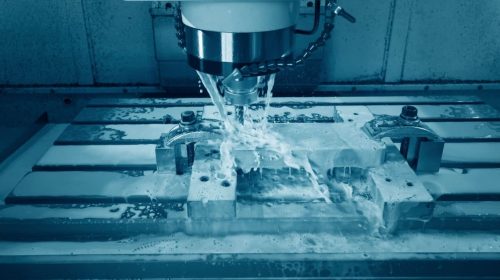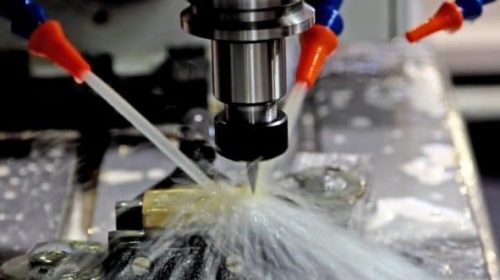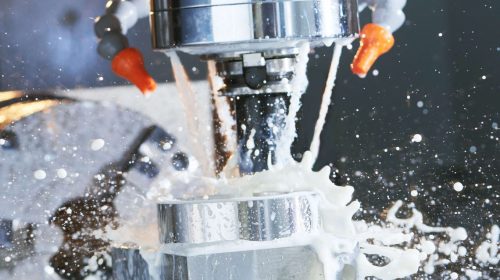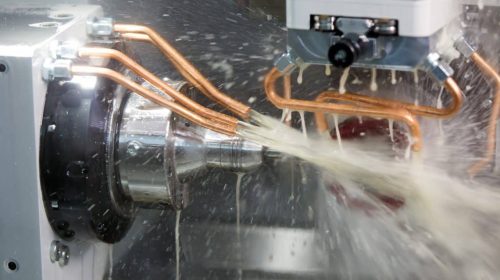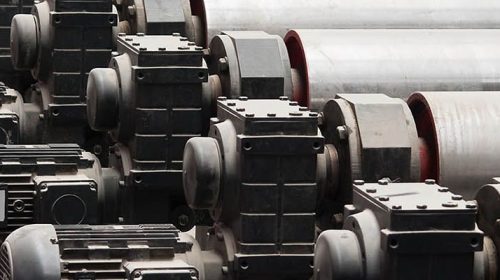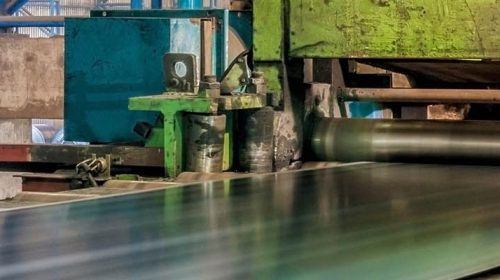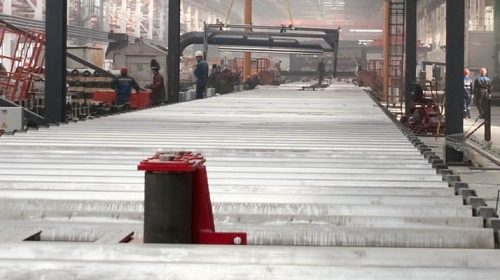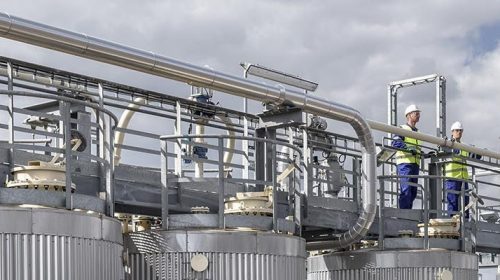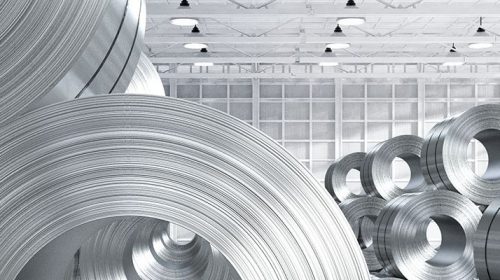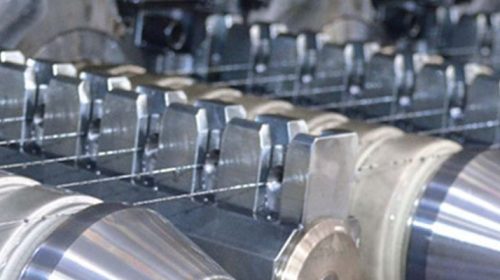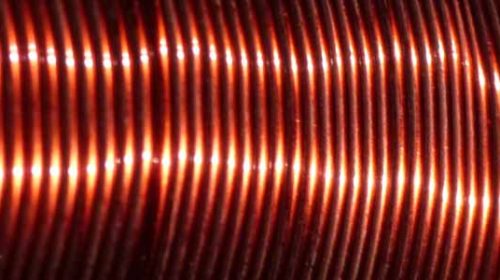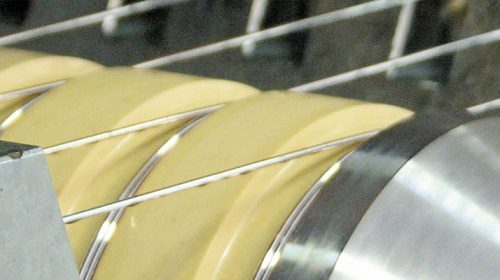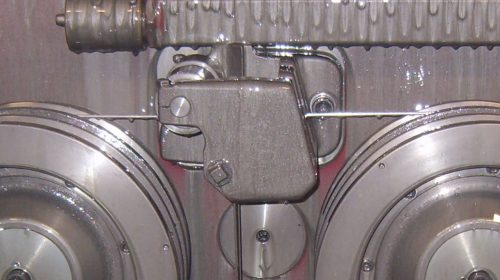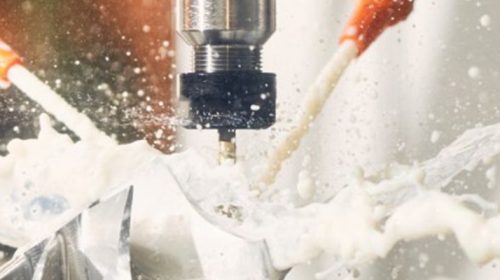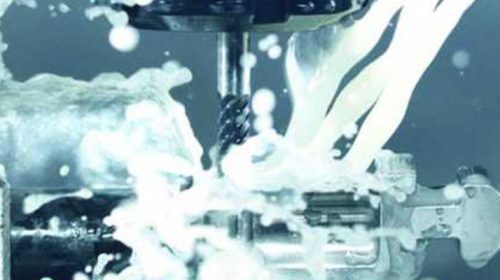Application of cold rolling oils on copper, copper-alloys & stainless steel-alloys during cold rolling
Cold rolling of copper, copper-alloys, stainless steel-alloys and other metal strip require cold rolling oils, usually applied by a spray pattern on the rolls and strip. These cold rolling oils are important to balance friction properties and cool the strip and rolls. Optimizing the spray pattern and oil droplet size is essential for improving the performance of the cold rolling process, ensuring high-quality results, and minimizing waste and environmental impact with respect to carbon emissions. Spray pattern and droplet size can be controlled through adjustments such as spray pressure, flow rate, oil viscosity, nozzle design and distance between nozzles and to workpiece.
Spray pattern
The spray pattern is a critical factor in the performance of cold rolling oils during the cold rolling process. It directly impacts the efficiency, effectiveness, and uniformity of lubrication, flushing and cooling, as well as the quality of the final rolled product. A consistent, even spray pattern ensures that the oil is applied uniformly across the entire metal surface, ensures that the oil is applied precisely where it is needed, and providing uniform lubrication, flushing and cooling. This helps to flush away the formed particles and prevent issues such as localized friction, cold welding, heat streaks and other issues leading to surface defects which can occur if the oil is not distributed properly. In contrast, an uneven spray pattern can lead to dry spots on the workpiece, which increases friction and heat generation, negatively affecting the rolling process and potentially damaging the strip surface finish and the work rolls.
Many factors may affect the spray pattern. Obviously, the nozzle design and spray pressure are very important in creating the desired droplet sizes and uniform distribution to cover the full width of the strip as well as the rolls. The spray should be aimed accurately and also consistent over time throughout the rolling process. Also important to consider the oil quality. Optimal formulated, lower viscosity cold rolling oils are easier to nebulize into fine droplets to produce the desired and uniform spray patterns.
Airborne oil droplet size
In cold rolling, oils are typically applied using spray nozzles or other misting systems. These systems spray the cold rolling oil into small droplets, which can be suspended in the air. The size of these oil droplets, which can range from microns to larger sizes, plays a key role in the way the oil interacts with the metal surface and how effectively it lubricates, flushes particles away and cools the strip and work rolls during the rolling process.
Smaller droplets (micron-sized) can be more easily dispersed and spread across the metal surface, providing even lubrication. Smaller droplets can penetrate into small roughness’s and gaps, ensuring uniform coverage and improving the lubrication efficiency. The smaller the droplet size, the larger the surface area for heat dissipation. Smaller droplets can absorb heat more effectively from the metal surface, resulting in better cooling performance. This is crucial because cold rolling generates substantial heat that needs to be removed to avoid overheating and surface defects.
Too fine a spray (with very small droplets) can lead to excessive misting, and oil may become airborne and leaving the area where it’s needed. In that case the oil is not effectively used in the rolling process, also resulting in oil loss, increased consumption, and potential environmental contamination and increased health risks. Optimizing droplet size and spray pattern can help reduce oil waste and lower the environmental impact by ensuring that only the necessary amount of oil is applied, and that it remains in the desired area.
Recovery oil from air
In most cold rolling systems, the amount of cold rolling oil used to lubricate and cool the strip and rolls causes a significant part of the cold rolling oil to become airborne outside the cold rolling mill. Obviously ventilation and exhaust systems are key for safety and environment. In the exhaust system the airborne oil should be recovered as much as possible.
Important to understand the differences in physical appearance of the oil in air, summarized below:
- Oil vapor is formed when oil comes into contact with a hot surface (>200°C) and vaporize. Oil vapor is the gaseous form, which means that the oil is present in the air as separate molecules. In practice also very fine droplet sizes (sub-micron) are considered as oil vapor. When oil vapor is cooled down to about 30 – 80 °C it condenses on surfaces or to oil mist.
- Airborne oil droplets or the so called oil mist or aerosols have a droplet size roughly ranging from 1-10 micron. Typically this oil mist is generated by the nozzle spray system.
- Droplets in oil spray are the bigger oil than in oil mist. These can be formed under different conditions in nozzles and also when the oil mist temperature decreases below 20°C. The droplet size of oil spray higher an typically larger than 50 micron.
A challenge is the high air volume flowing through the ventilation system whereas removing oil from air requires sufficient time for the oil mist to cool down and condensate into larger droplets. As a large part of the cold rolling is present as oil mist and vapor, an effective oil recovery is key for minimizing environmental contamination and oil consumption.
Characteristics of cold rolling oil
Cold rolling oils are designed to meet a large variety of parameters. Not only the lubrication and cooling performance in cold rolling, but also the environment and safety profile plays an important role. In cooperation with OEMs and customers, the carbon emissions of various cold rolling oils were investigated. As a result, cold rolling oils can be designed to assist in reducing carbon emissions. For example additives to increase the nature of the airborne oil to condense quicker in large droplets for better removal from the air. Or optimize the composition to increase the initial boiling point of the cold rolling oil for less evaporation upon contact with high temperatures. The Q8 Bach RSB and Q8 Bach RSD product ranges are examples of such a special design and development, but also existing product ranges and customized oil compositions are subject to improvements.
Remarks
Q8Oils work closely together with customers to improve their cold rolling process with customized oil compositions. An important part of improvements is the correct understanding of all requirements, the operation parameters of the cold rolling mills and other steps in the entire process. Market shows trends towards thinner sheets, better surface finish, higher productivity, reduced environmental impact and saving costs. Q8Oils is committed to formulate the cold rolling oils that can support these continuous improvements.
For more information, please contact our Rolling Team at Q8Oils.


